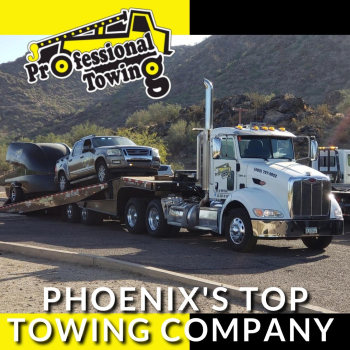

Welcome to Bumper to Bumper Radio!
Drive in anxious and cruise out confident with the best automotive information for your vehicle! Tune in to KTAR News 92.3 every Saturday from 11 a.m. to noon as Matt Allen helps listeners with their car problems. The show call in number is 602-277-5827.
Latest News From Bumper to Bumper Radio

- ILX is retail #1 and fastest-growing model in the premium compact sedan segment[1]
- ILX captures the most first-time, millennial and multicultural buyers in Acura lineup[2]
- ILX combines sporty styling with array of high-tech and premium features, including available Apple CarPlay® and Android Auto™ integration and standard AcuraWatch™
TORRANCE, Calif., Oct. 11, 2019 -- Arriving today in Acura showrooms, the 2020 ILX looks to continue its success as the retail best-selling model in segment. ILX is a critical gateway to the Acura brand, capturing the most first-time, millennial and multicultural buyers of any model in the Acura lineup. Receiving major upgrades for the 2019 model year, ILX became the fastest growing model in its segment and earned its best sales month in more than three years this August. The 2020 Acura ILX will be offered at a starting price3 of $25,900 (excluding $995 destination and handling), unchanged from the previous model year.
Just a year ago, Acura completed a design transformation of its lineup – introducing a significantly updated ILX with sportier styling, standard AcuraWatch™ technology as well as updated cabin tech, including available Apple CarPlay® and Android Auto™ integration. In the first eight months of 2019, ILX has picked up more than nine points of retail segment share1 and captures the largest percentage of sales from under-35 buyers of any model in the premium compact sedan segment.
Additionally, for the past two years, ILX has earned the top spot in Kelly Blue Book's 5-Year Cost to Own rankings among entry-luxury cars, indicative of the Acura brand's strong reputation for high quality and strong value retention.
2020 ILX
The 2020 Acura ILX is available with three distinct packages: Premium, Technology and the popular A-Spec sport appearance package – each powered by a 201-horsepower (SAE net), 2.4-liter, DOHC i-VTEC™ engine and quick-shifting 8-speed Dual Clutch Transmission (8DCT) with steering wheel-mounted paddle shifters. Every 2020 ILX receives an EPA fuel economy rating of 24/34/28 mpg (city/highway/combined)4.
Additionally, all 2020 ILX models come equipped with the AcuraWatch™ suite of active safety and driver-assistive technologies, which includes Collision Mitigation Braking System™ (CMBS™) with Forward Collision Warning (FCW), Lane Keeping Assist (LKAS), Adaptive Cruise Control (ACC), and Road Departure Mitigation (RDM) with Lane Departure Warning (LDW).

ORLANDO, Fla. (Oct. 3, 2019) – New research from AAA reveals that automatic emergency braking systems with pedestrian detection perform inconsistently, and proved to be completely ineffective at night. An alarming result, considering 75% of pedestrian fatalities occur after dark. The systems were also challenged by real-world situations, like a vehicle turning right into the path of an adult. AAA’s testing found that in this simulated scenario, the systems did not react at all, colliding with the adult pedestrian target every time. For the safety of everyone on the road, AAA supports the continued development of pedestrian detection systems, specifically when it comes to improving functionality at night and in circumstances where drivers are most likely to encounter pedestrians.
On average, nearly 6,000 pedestrians lose their lives each year, accounting for 16% of all traffic deaths, a percentage that has steadily grown since 2010.
“Pedestrian fatalities are on the rise, proving how important the safety impact of these systems could be when further developed,” said Greg Brannon, AAA’s director of Automotive Engineering and Industry Relations. “But, our research found that current systems are far from perfect and still require an engaged driver behind the wheel.”
While time of day and location are contributing factors to pedestrian fatalities, vehicle speed also plays a major role. Previous research from the AAA Foundation for Traffic Safety found that pedestrians are at greater risk for severe injury or death the faster a car is traveling at the time of impact. For example, a pedestrian hit by a vehicle traveling at 20 mph has an 18% risk of severe injury or death. Increase that by just 10 mph to 30 mph and the risk more than doubles to 47%. AAA’s latest study found that speed impacted system performance as well, with results varying between testing performed at 20 mph and 30 mph.
In partnership with the Automobile Club of Southern California’s Automotive Research Center, AAA evaluated the performance of four midsize sedans equipped with automatic emergency braking with pedestrian detection to determine the effectiveness of these systems. Testing was conducted on a closed course using simulated pedestrian targets for the following scenarios:

NATICK, Mass., Oct. 9, 2019 -- In the LED lighting industry, large businesses in the commercial and industrial sectors were hesitant to integrate the technology at scale in their operations. Now that LED technology has had over a decade's worth of maturation and refinement, two of the auto industry's leading manufacturers are continuing their large-scale installation projects.
In 2014, Ford invested in a $25M LED retrofit project aimed at manufacturing facilities in the US and worldwide, resulting in an annual energy savings of 56 million kilowatt-hours – enough electricity to power 6,000 average-sized homes every year. Similarly, GM is enjoying a 60% reduction in costs over 32 project sites. Between them both, the savings is nearly $10 million annually.
ThinkLite LLC, an established LED lighting manufacturer headquartered in Natick, MA, has serviced the automotive industry for nearly a decade. ThinkLite has seen an uptick in the number of RFPs for commercial and retail installations in the last year, a number they think is only going to rise.
"Since 2018, we have experienced an increase in market demand by over 25%. Corporations, property managers, and manufacturing facilities, now understand the real-world cost savings, light quality improvement, and simplified maintenance afforded by our LED solutions," says Danny Wadhwani, COO-CFO of ThinkLite. "State and Federal energy incentives, paired with efficient lighting, allows for a positive ROI in as little as 15 months."
ThinkLite is well-known in the automotive industry, having recently come off a NASCAR win at The Magic Mile in Loudon, NH in September. The #36 ThinkLite car was driven to Victory Lane by Bobby Santos III, leaving Mr. Wadhwani very pleased:

Two weeks after attacks on major Saudi Arabian oil facilities, the majority of Americans are starting to see signs of gas prices trending cheaper. While the national average may have only decreased by a penny on the week, 10 states saw pump prices decline by a nickel or more.
“Crude oil prices have dropped close to where they were right before the drone attacks on the Saudi oil facilities,” said Jeanette Casselano, AAA spokesperson. “This is helping to push gas prices cheaper in most of the country. Americans can expect this trend to continue, except for those filling-up on the West Coast, where refinery disruptions are causing spikes at the pump.”
On the week, all West Coast region states saw prices increase with California (+28 cents) seeing the largest spike, which drives the state average to $4.02 and is likely to push more expensive this week.
Today’s national gas price average of $2.65 which is the same price as last week, and is seven cents more expensive than last month, but 22-cents cheaper than a year ago.
Quick Stats
The nation’s top 10 largest weekly changes are: California (+28 cents), Ohio (-15 cents), Nevada (+13 cents), Michigan (-12 cents), Kentucky (-11 cents), Illinois (-10 cents), Delaware (-9 cents), Indiana (-7 cents), Iowa (-7 cents) and Minnesota (-6 cents).
The nation’s top 10 least expensive markets are: Louisiana ($2.30), Mississippi ($2.30), South Carolina ($2.32), Arkansas ($2.32), Alabama ($2.33), Texas ($2.35), Virginia ($2.35), Oklahoma ($2.35), Missouri ($2.36) and Tennessee ($2.37).
West Coast
Pump prices in the West Coast region have increased on the week, following a number of refinery outages that have tightened supply in the market. Robust demand is contributing to price increases, and prices are unlikely to subside until supply is strengthened. California ($4.02) and Hawaii ($3.67) are the most expensive markets in the country. Washington ($3.23), Nevada ($3.28), Oregon ($3.10), Alaska ($2.96) and Arizona ($2.91) follow. California (+28 cents) saw the largest increase, followed by Nevada (+13 cents).
The Energy Information Administration’s (EIA) report for the week ending on September 20, showed that total West Coast gasoline stocks decreased significantly by 1.5 million bbl to 27.1 million bbl. This level is approximately 800,000 bbl lower than this same time last year. Tight supplies will continue to cause prices to increase, but imports and increased deliveries from nearby states are expected to help to ease increasing prices.
A new video from the Car Care Council, entitled “Auto Care Goes a Long Way,” shows how vehicle owners can save money with some simple preventative maintenance.
“A little auto care can go a long way toward protecting your vehicle investment,” said Rich White, executive director, Car Care Council. “Neglecting your vehicle can be very costly in the form of more expensive repairs and loss of resale value down the road. The Car Care Council’s new video highlights easy ways to keep your vehicle running efficiently and safely.”























